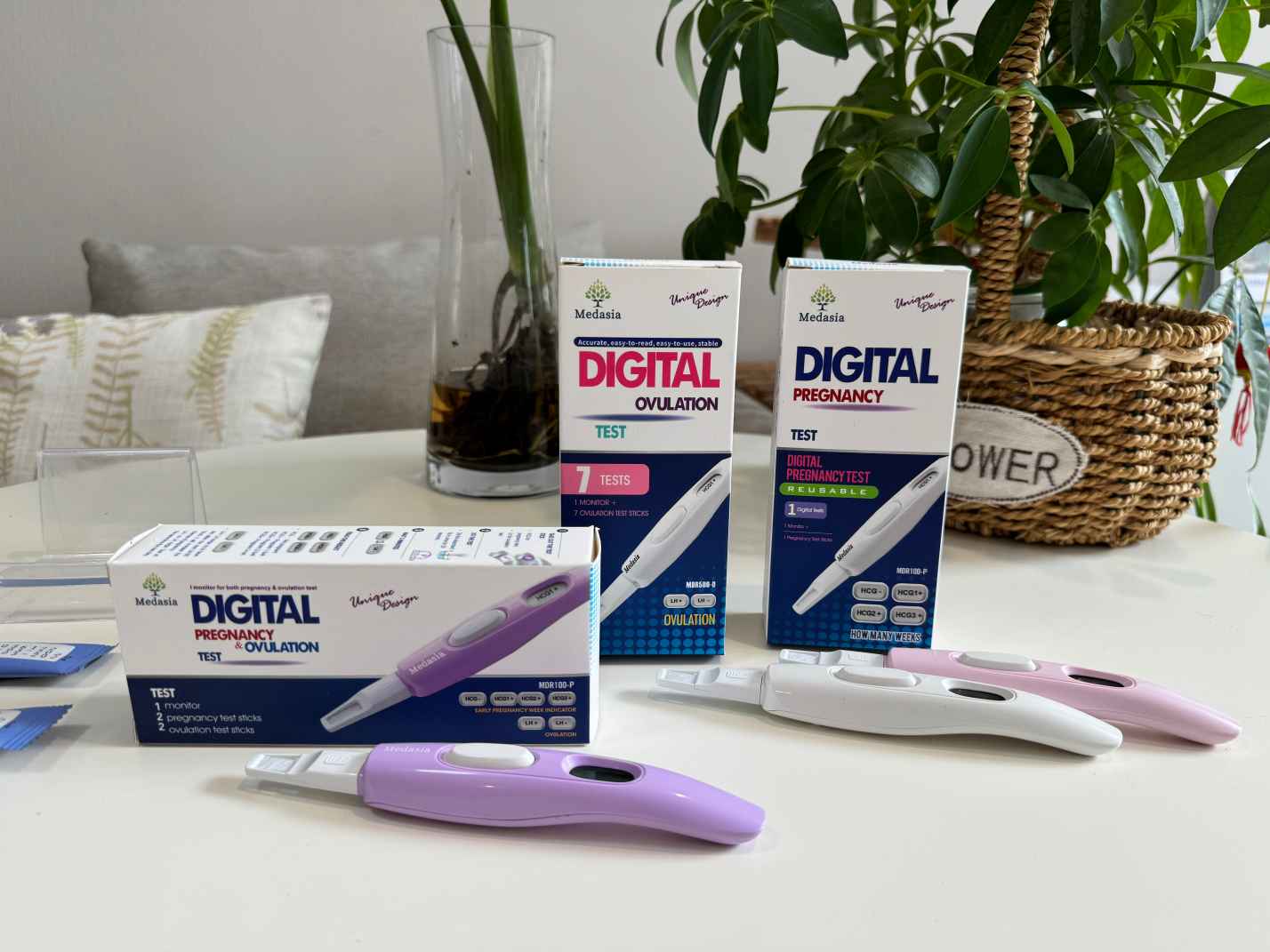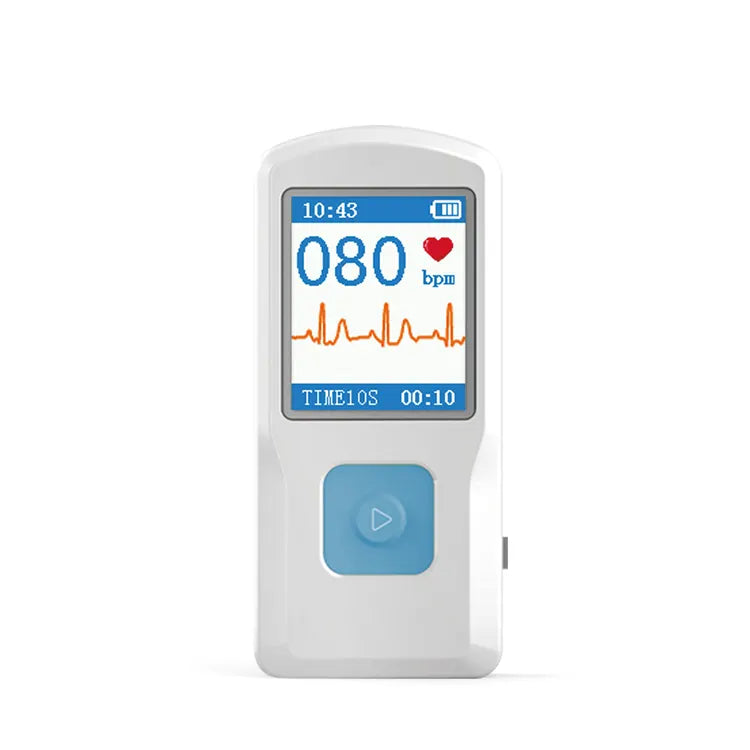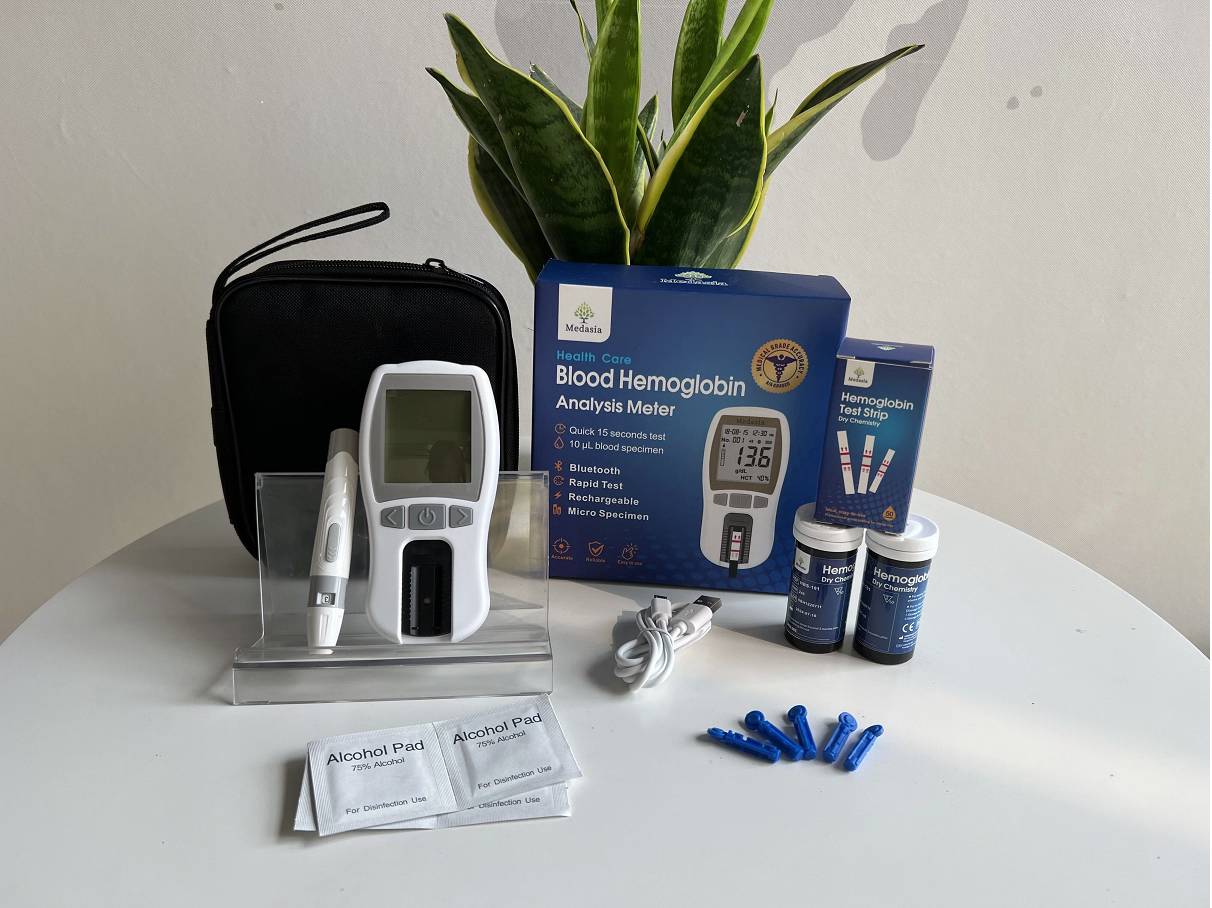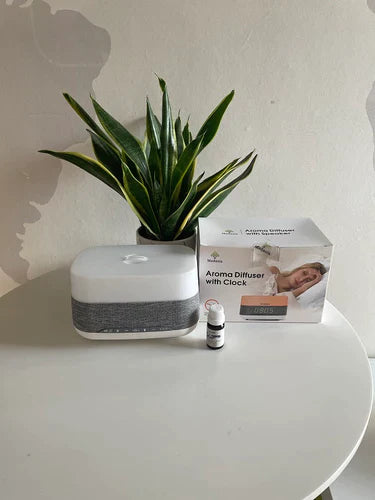Are Digital Pregnancy Tests More Accurate? Unveiling the Truth

Pregnancy tests are a key tool for women looking to confirm their pregnancy, and with advancements in technology, there are now two main types of at-home tests: traditional line tests and digital pregnancy tests. A common question arises: Are digital pregnancy tests more accurate?
In this blog, MedAsia Healthcare will explore the differences between digital and traditional pregnancy tests, how each one works, and whether digital pregnancy tests offer better accuracy.

How Do Pregnancy Tests Work?
Whether digital or not, both types of tests work on the same principle: they detect the presence of hCG (human chorionic gonadotropin), a hormone that is produced after a fertilized egg attaches to the uterus.
Traditional line pregnancy tests: These are the tests that show two lines if you’re pregnant and one line if you’re not. The lines can sometimes be faint or hard to interpret, leading to confusion.
Digital pregnancy tests: Instead of lines, these tests display a clear “Pregnant” or “Not Pregnant” on the screen, eliminating any guesswork.
Are Digital Pregnancy Tests More Accurate?
When it comes to accuracy, both digital and traditional tests are equally accurate in detecting pregnancy. Both types of tests measure the same hormone (hCG) and are often manufactured by the same brands, meaning they undergo the same levels of scrutiny and quality control. Here’s a breakdown of why accuracy is consistent:
1.Same Sensitivity to hCG
The sensitivity to hCG is the most important factor in a pregnancy test’s accuracy. Both digital and traditional tests usually have the same level of sensitivity, meaning they can detect hCG levels at the same point in early pregnancy.
2.Misinterpretation of Results
One area where digital tests may seem "more accurate" is in the interpretation of the results. Traditional line tests can sometimes produce faint lines, leading to confusion about whether the result is positive or negative. With a digital pregnancy test, you get a straightforward “Pregnant” or “Not Pregnant” result, which can feel more reliable, though the actual accuracy is the same.
3.Human Error and Clarity
Digital tests reduce the chance of human error in reading the results. With line tests, users might misinterpret a faint line or check the result too early. Digital tests remove this ambiguity by offering a clear answer. So, while the accuracy in detecting hCG is the same, the clarity of the result with digital tests might give a stronger sense of confidence.
When Might a Digital Test Be More Helpful?
Even though both tests are equally accurate, there are situations where you may prefer a digital test:
1.Faint lines on a traditional test: If you’ve ever squinted at a faint line on a traditional test, you know how frustrating it can be. A digital test removes this uncertainty by clearly displaying the result.
2.Early testing: Some digital tests are designed to be used earlier than traditional tests, as early as five days before a missed period. However, the accuracy of both tests increases the closer you are to your expected period.
How to Ensure an Accurate Pregnancy Test Result?
Regardless of whether you use a digital or traditional test, here are a few tips to get the most accurate results:
·Test at the Right Time: The best time to take a pregnancy test is the day of your missed period or later. If you test too early, hCG levels may be too low to detect.
·Use First Morning Urine: hCG is more concentrated in the morning, so using the first urine of the day can increase accuracy.
·Follow the Instructions: Always read and follow the instructions on the test carefully. This is especially important if you’re using a traditional test, as leaving it too long before checking the result can lead to evaporation lines.
Conclusion: Is One Test More Accurate Than the Other?
To sum up, digital pregnancy tests are not more accurate than traditional tests when it comes to detecting pregnancy. Both types of tests are highly accurate when used correctly. However, digital tests can provide a clearer and more easily interpreted result, which might make them feel more reliable to some users.
If you want the ease of reading a clear “Pregnant” or “Not Pregnant” result, a digital test is a great choice. If you're okay with reading lines and want a more budget-friendly option, a traditional test will work just as well.
Related FAQs:
1.Can I trust a faint line on a traditional pregnancy test?
If two lines appear on the test paper, it means that there is enough HCG (human chorionic gonadotropin) in the urine being tested. Regardless of whether the line is clear enough, it indicates that the tester is pregnant. However, some people will find that the test line on the test paper is weakly positive, that is, the color is much lighter than the control line. Don't worry about it, this may be related to your gestational age, the test method, and the sensitivity of the early pregnancy test paper.
2.How early can a digital pregnancy test detect pregnancy?
Digital pregnancy tests can detect pregnancy as early as 5-6 days before your missed period, depending on the sensitivity of the test.
3.What should I do if I get different results from two tests?
If the test strip is expired or the pregnancy test device is of poor quality, it is advisable to use a new, reliable test strip and retest. Additionally, in early pregnancy, varying levels of the hCG hormone and differences in test strip sensitivity can lead to inconsistent results. For the most accurate and reliable outcome, it is recommended to visit a healthcare facility for a blood test, which eliminates the potential effects of improper use or variations in urine concentration.
МЫ РЕКОМЕНДУЕМ
Похожие статьи
- Подписаться MedInsights
- Подписаться MedInsights
- Подписаться MedInsights
- Подписаться MedInsights
- Подписаться MedInsights














